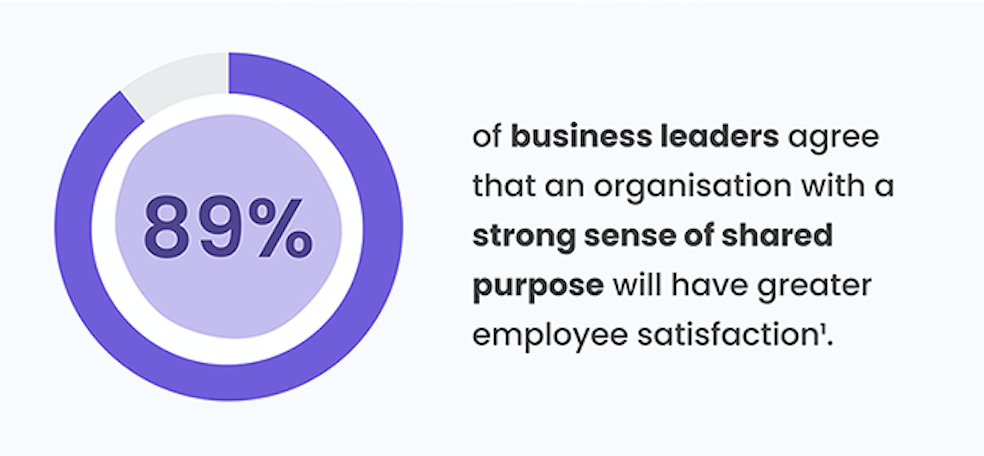
The difference between attrition and turnover
Hiring is the most important thing an organisation will ever do. When you hire the right people you’re ensuring the business runs smoothly and efficiently, whilst improving the culture of the organisation. When an organisation reduces attrition rates and employee turnover and enhances and increases employee lifecycle, they are creating the perfect breeding ground for organisation-wide success.
So, how do we measure the success of an organisation in lowering employee turnover?
We look towards two key metrics to measure the success of an organisation’s hiring process. These two key metrics are attrition rates and turnover rates.
Both attrition and turnover arise when an employee leaves the business, but contrary to popular belief, these two metrics focus on different variants and areas.
When we talk about the attrition rate, we’re referring to the gradual reduction of a workforce. This is most often calculated when employees leave or retire, and is typically voluntary or natural in nature. Organisations aim to have a low attrition rate because it means employees are satisfied and content with their workplace and role. If we are to compare the two, we would conclude that attrition is more concerned with the big picture, employee lifecycle and the numerical change as a result within the workforce.
When we discuss the turnover rate, however, we are more concerned with the internal culture created within a company and the frequency of hiring and quitting or firing as a result. In essence, we’re measuring staff turnover. Turnover is more focused on employees who leave on their own volition, but will also refer to employees who have been terminated or discharged. Turnover rate is, in essence, a key metric that we use to measure employee lifecycle.
Another key difference that we can see between attrition rates and turnover rates is that when an employee leaves the workforce in the case of attrition, the role is no longer available. When we look at turnover rates and an employee leaves the business, the company has to actively seek to refill the position, which results in cost and loss in productivity for the organisation.
So, what can we do to reduce staff turnover?
Ways to reduce staff turnover
1. Hire the right people
This may seem like a straightforward answer, but this is the key point that causes an increase in staff turnover. You must ensure the role has been defined to both the internal team and potential recruits. This will mean that you’re not wasting the candidates time or your own teams time and your team can instead focus on really getting to know the right candidates.
It’s also important to do preliminary testing, such as behavioural and personality tests, to determine that candidates are the right fit for your organisation. This will mean you can look beyond what we see on paper and measure their fit in terms of company culture and values. By incorporating this interview and application process into your overall strategy, you can establish early on whether or not a candidate will be a good fit.
This is a great way to establish if they are the right hire!
2. Give praise and recognition to employees
Valued and appreciated employees are happy employees!
You need to be sure you provide them with encouragement and recognition for their efforts. This may be through a promotion, a title change, a bonus, or shout-out to the organisation. By providing recognition or encouragement, you’re developing a positive working environment where members can flourish and be the best that they can be. Showing appreciation for employees’ efforts is a small step in building a positive relationship.
The more your employees feel respected and appreciated, the less likely they are to leave.
3. Career progression
Showing your employees they have the potential to grow within the business is a key factor in reducing staff turnover. If you don’t give your current employees benefits to stick around, it could lead them to look at other employment opportunities in an organisation that will give them the career progression they desire.
Most staff members are wanting to expand their skill set and knowledge, so giving them an opportunity or pathway to this progression can give them both motivation to not only work harder but give them the motivation to stay for a long time at your organisation.
4. Work/Life Balance
If you’re wanting to create a diverse workforce, you need to create and enforce an environment which allows employees to have a positive and fulfilling work/life balance through flexible working opportunities.
This could be a small difference, such as allowing employees to start and end their days at times which work around their schedules or giving employees the opportunity to work from home. By being a little more flexible, it means employees will feel less stressed, more valued and like they are able to properly balance life commitments with work. A positive work/life balance is a key reason employees stay in a role, but also a key factor as to why they will accept the role in the first place.
5. Collaboration
Rather than taking a hierarchical, top-down approach, organisations need to create a flat structure, where every staff member’s ideas and approaches are valued equally.
Ways that an organisation can do this is through allowing all staff, from entry-level to C-suite, to share their ideas and thoughts in a meeting by reserving space for question time and creating an open door policy. Companies need to make it clear that every individual is an expert in their field, and that they value their feedback and advice.
Being more open and inclusive allows team members to feel more respected within their roles and more appreciated as a whole. Actions, such as the ones listed above, create a more happy workforce and will be guaranteed to reduce staff turnover as a result.
6. Competitive Salary
If you want to keep your top employees, you need to make sure they are compensated properly for their role. When their role evolves over time, it’s essential you also evolve their salary to be representative of their skills and experience.
In order to do this, you need to invest time in researching wages and salaries for comparable positions so that you know you are providing a competitive salary. A great way to do this is to find out what your competitors are paying their employees. Remember, your competitors are most likely on the lookout to headhunt your best talent, so you need to ensure you’re one step ahead.
You can also provide other perks to your employees, such as phones and end-of-year bonuses to show your appreciation to them.
7. Create a great work culture
At the end of the day, you can offer everything above, but if people are miserable at work and your culture isn’t fostering positive group norms then staff will leave.
You need to create a culture which encourages your team to be their true selves, whilst empowering them to be the best they can be. No workplace should be all work and no play, so you need to focus on creating activities that give your employees a break. Keep your team engaged and happy, and make your workplace a place your team is excited to go to every morning!
Want to learn more? Check out our Employer Branding Playbook for how to create a stand-out employer brand for your organisation.
Reduce your hiring costs and staff turnover with these helpful tips by hiring the right people. Learn more about LiveHire and book a demo with our team and make 2020 your best year yet!



